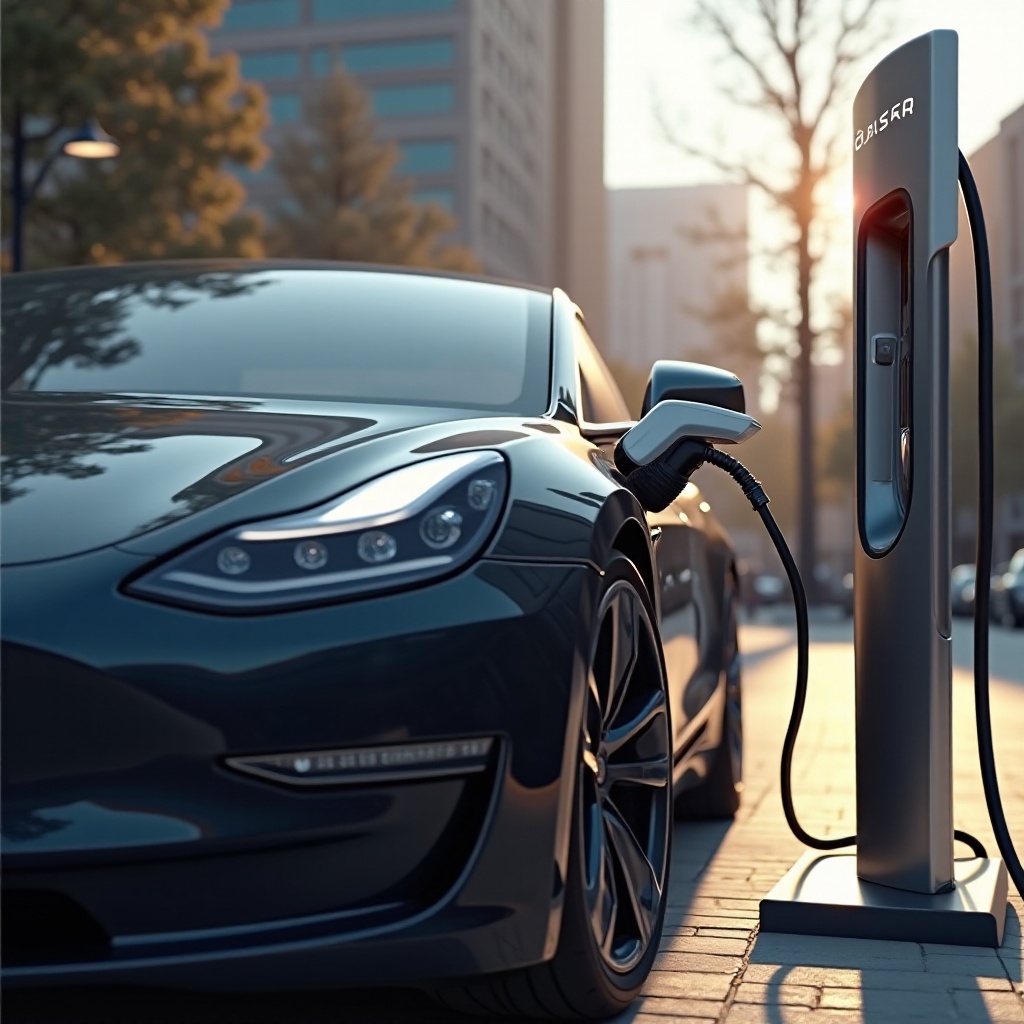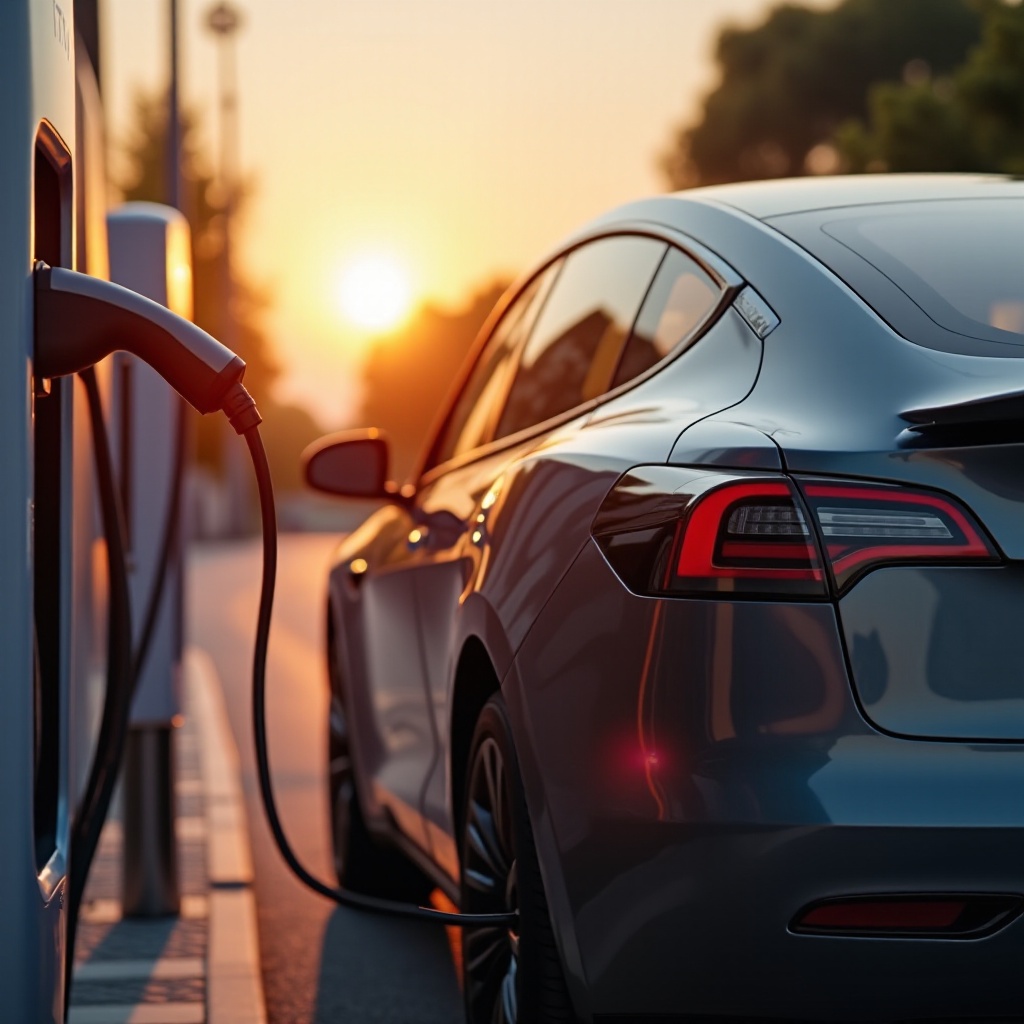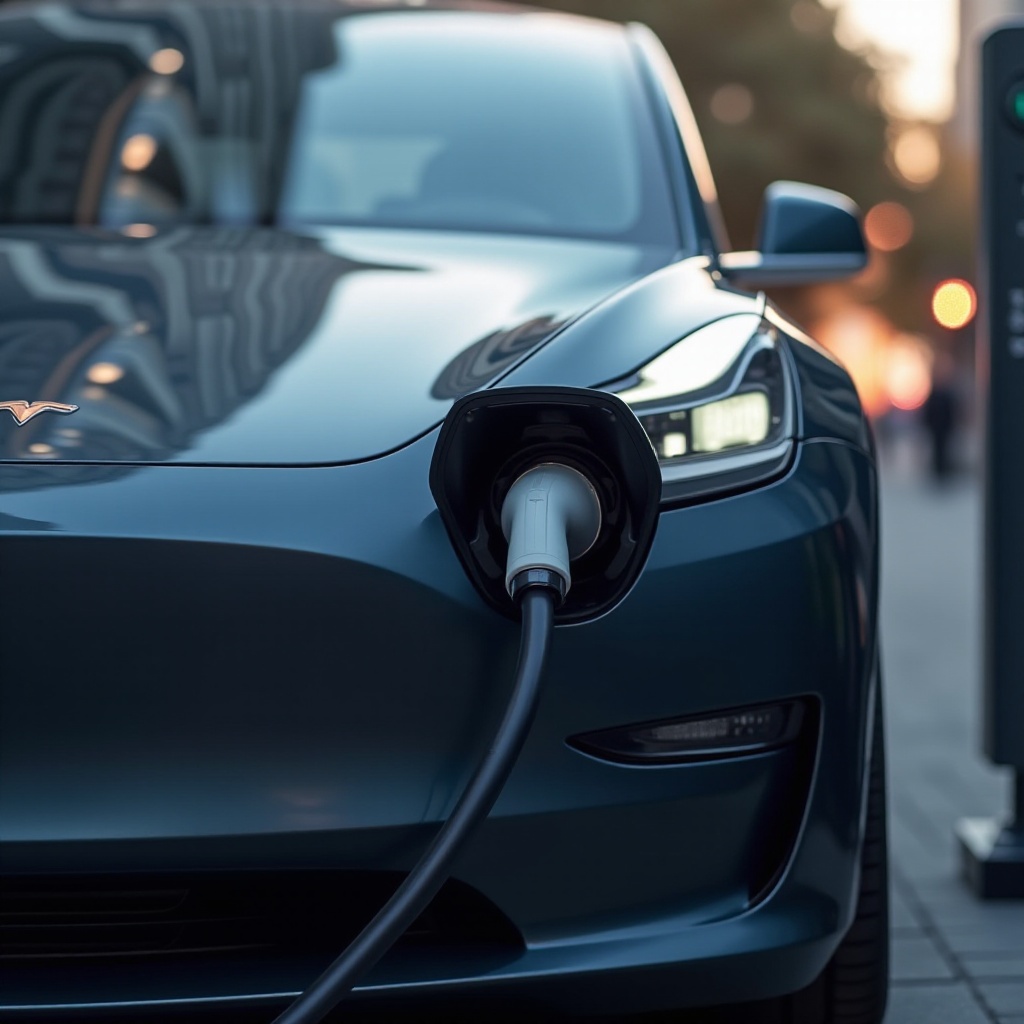Introduction
Ensuring that your Tesla Model 3 is charged effectively requires understanding various charging options and selecting the most appropriate one for your needs. This guide offers comprehensive recommendations for Tesla Model 3 charging, focusing on optimizing charging times, maintaining battery health, selecting the right equipment, and mastering efficient charging techniques. By the end of this guide, you will be well-equipped with the know-how to keep your Tesla Model 3’s battery in top-notch condition.

Types of Charging Options for Tesla Model 3
Tesla Model 3 owners have several charging options at their disposal, each with its unique advantages and ideal use cases.
Level 1: Standard 120-Volt Home Outlets
Level 1 charging involves plugging your Model 3 into a standard 120-volt home outlet using the mobile connector that comes with the car. This method is accessible and convenient for daily top-ups but relatively slow, adding approximately 3 to 5 miles of range per hour. It is best suited for overnight charging when the car is parked for extended periods.
Level 2: 240-Volt Home Charging Stations
Homeowners who desire faster charging times often install Level 2 charging stations at home. These 240-volt chargers significantly reduce charging time, adding up to 30 miles of range per hour. Installing a Level 2 charger requires professional setup and typically involves additional costs, but it is a worthwhile investment for those who drive their Model 3 frequently or require faster charging.
Level 3: Superchargers
Tesla’s Supercharger network provides Level 3 charging, offering rapid battery replenishment when you’re on the go. Superchargers can add up to 170 miles of range in just 30 minutes. Primarily located along major highways and urban centers, they are perfect for long-distance travel, allowing you to charge quickly and continue your journey with minimal downtime.
Recommended Charging Times
Charging your Tesla Model 3 at optimal times can enhance convenience, save costs, and maintain the battery’s health.
Daily Commutes and Overnight Charging
For daily commutes, overnight charging at home is the most practical approach. Plugging in your Model 3 before you go to bed ensures it is fully charged by morning. This routine not only provides a full battery for the day ahead but also leverages off-peak electricity rates, which are typically lower at night.
Long Trips and Supercharger Network
When planning long trips, map out your route considering the Supercharger network. Tesla’s navigation system suggests ideal charging stops, minimizing the time spent charging. Supercharging every few hours during your trip ensures you can travel long distances without significant delays, maximizing your travel efficiency.
Optimal Times for Off-Peak Electricity Rates
Many electricity providers offer lower rates during off-peak hours, usually late at night or early morning. Scheduling your car to charge during these times can substantially reduce your electricity bills. Tesla’s charging scheduler allows you to set your car to start charging automatically during off-peak hours, optimizing cost savings.

Maintaining Battery Health
Maintaining your Tesla Model 3’s battery health involves understanding the ideal charging practices and making necessary adjustments according to seasonal changes.
Ideal State of Charge Levels
To prolong battery life, keep the state of charge between 20% and 80%. Charging to 100% is generally unnecessary for daily use and can accelerate battery degradation over time. For daily use, optimizing the charge level is crucial to maintaining battery health.
Avoiding Constant Supercharging
While Superchargers provide rapid charging, frequent use can stress the battery over time. Use Superchargers primarily for long trips and avoid relying on them daily. Regularly using Level 2 home charging stations is gentler on the battery and better for long-term health.
Seasonal Adjustments for Battery Performance
Battery performance can be affected by extreme temperatures. In cold weather, precondition your battery before driving or charging to ensure it operates efficiently. During hot weather, park in shaded areas and avoid charging the battery to full capacity, as heat can accelerate degradation.

Choosing the Right Charging Equipment
Selecting appropriate charging equipment for your Tesla Model 3 ensures efficient and safe charging, both at home and on the go.
To maximize the benefits of efficient charging, knowing the right equipment for your needs is essential. Here are the best options available for Tesla Model 3 owners:
Home Charging Stations
Investing in a home charging station, such as Tesla’s Wall Connector, offers the most reliable and efficient home charging solution. These stations provide faster charging speeds and often come with smart features that integrate with the Tesla app.
Portable Charging Cables and Adapters
Having portable charging cables and adapters on hand is crucial for unexpected scenarios. Keep a Tesla mobile connector and necessary adapters in your car for situations where a dedicated charging station isn’t available, ensuring you can still charge from various outlet types.
Reliable Third-Party Charging Options
While Tesla’s charging solutions are optimized for their vehicles, there are reliable third-party options available. Ensure any third-party equipment you choose is certified and compatible with Tesla vehicles to maintain safety and charging efficiency.
Tips for Efficient Charging
Maximize your Tesla Model 3’s charging efficiency with these practical tips.
Using Scheduled Charging Features
Use your Tesla’s scheduled charging feature to align charging times with off-peak electricity rates for cost savings.
Monitoring Charging via the Tesla App
Leverage the Tesla app to monitor charging status in real-time, start or stop charging remotely, and receive notifications when charging is complete.
Utilizing Tesla’s Range Estimator
Utilize Tesla’s range estimator to plan trips and understand how different driving conditions affect your vehicle’s range. Accurate range estimation ensures you can plan your charging stops and driving habits accordingly.
Conclusion
Efficient and smart charging practices are essential for maximizing the battery health and performance of your Tesla Model 3. By using the right charging stations, understanding optimal times for charging, and following best practices for battery maintenance, you can ensure your vehicle operates efficiently and reliably for years to come.
Frequently Asked Questions
How often should I charge my Tesla Model 3 to maintain battery health?
For optimal battery health, it is recommended to maintain the state of charge between 20% and 80% and avoid frequent full charges. Regular overnight charging for daily use is ideal.
What are the costs associated with installing a Level 2 home charging station?
The cost of installing a Level 2 home charging station can vary, typically ranging from $500 to $2,000, including equipment and professional installation.
Are there any subscriptions or memberships needed for using Superchargers?
No subscription is required for using Superchargers, but there are per-use fees that vary by location. Tesla owners can pay for Supercharging through their Tesla account.

